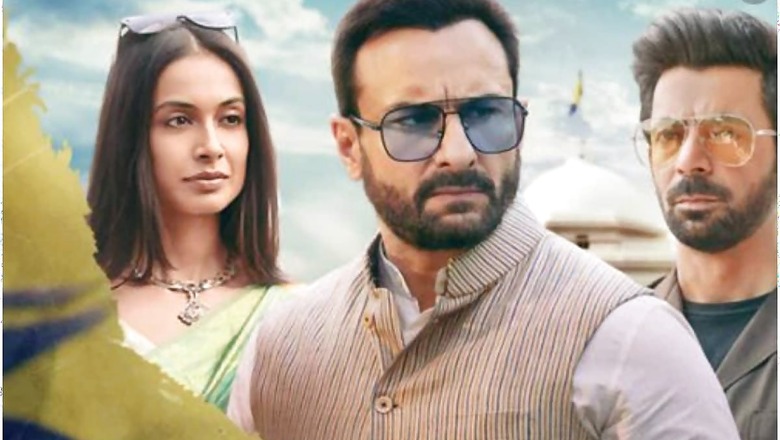
views
On February 25, the government announced the Information Technology (Intermediary Guidelines and Digital Media Ethics Code) Rules, which pertain to social media intermediaries as well as online news publishers and online curated content providers, popularly known as OTTs. Although there are three elements to these set of rules, I shall be confining myself to the rules and its impact on OTTs.
Prior to the introduction of these rules, OTT (over-the-top) platforms were operating in a boundless sea of uncertainty. A film released in the theatre was under the purview of the Cinematograph Act while a programme broadcasted conventionally on television was under the ambit of the Cable Television Networks Rules. However, there existed almost a lacunae in the law for OTT platforms and, resultantly, they were operating free of any rules or regulations. Not only did this fall short of well-established constitutional provisions but was also severely disadvantageous to all the stakeholders involved, including people viewing such content on OTT platforms as well as the makers of such content.
OTT platforms operating unregulated was contrary to the principle enshrined under Article 14 of the Constitution: equals must not be treated unequally. Let us take an example, a film starring your favourite actor was to release on an upcoming Friday and would, therefore, require a censor certificate issued by the Central Board of Film Certification. To obtain such a certificate, the film may also be subject to any cuts if required. However, if the same film with the same actors, crew and content were to release on an OTT platform, be it Netflix or Amazon Prime, it would release without any cuts or a censor certificate. Illogical, isn’t it?
A recent instance which highlighted the disadvantages for the viewers as well as the makers was the release of the web series, ‘Tandav’. It was alleged that certain scenes in the show offended the sentiments of a certain section of society. In the absence of any established grievance redressal mechanism system, aggrieved parties rushed to different police stations across the country to register their complaints. Similar to the old adage in England, that equity is as long as the chancellor’s foot, the course undertaken by the law and order system in India can certainly, at times, be unpredictable.
ALSO READ| New Rules for Digital, OTT Platforms Revolutionary: Tandav Director Ali Abbas Zafar
This also highlighted the disadvantage for the makers of such content, as they had to run from pillar to post to defend themselves and were drawn up in elaborate legal proceedings. A trend was observed that different courts in the country were reacting differently to the same complaint. Had any guidelines been present, the makers would have certainly known what is permissible and what is not. Moreover, once the content produced by them was in consonance with such guidelines, the Sword of Damocles would not be hanging over their head and they would, in all likelihood, be protected from any such adverse action.
However, every time the question of guidelines regulating OTT was put forth, there was palpable fear amongst filmmakers as well as viewers concerning the subject matter of such guidelines. The filmmakers were afraid of their artistic creativities being stifled and therefore vehemently resisted any guidelines. Similarly, the viewers were afraid that any such guideline could have the potential to translate into moral policing. In such a scenario, censorship as an alternative would have taken us one step forward but two steps back. However, with the introduction of self-regulation via the digital media rules, a balance has been struck between artistic creativity and upholding the interests of the state. Through these rules, India for the first time witnesses a paradigm shift from censorship to classification.
The digital media rules introduce a system of self-classification whereby an OTT platform itself classifies content for a suitable age category. It is almost as if the guidelines have drawn a leaf from the Supreme Court’s epochal judgment in the case of Shreya Singhal, as the only permissible restrictions stipulated under the rules are those which have been construed as reasonable restrictions to the Freedom of Speech under Article 19(2) of the Indian Constitution. It is further encouraging that the guidelines depart from the existing rating categories to introduce categories such as U/A 13+ and U/A 16+. This reflects the coming of age of Indian society where it attempts to break the shackles of being consistently referred to as a conservative society. The guidelines finally reflect the understanding and maturity of Indian adolescents and adults.
ALSO READ| Your 6-Point Guide to New IT Rules as Govt Tightens grip on Social Media, OTT Content
Lastly, the rules mandate a three-tier grievance redressal system. Level I introduces self-regulation, Level II introduces self-regulation by an independent self-regulating body and Level III consists of an oversight mechanism by an inter-ministerial committee. Prior to the existence of such guidelines, grievances were being aired in the form of multiple FIRs being filed in different states. With the establishment of a grievance redressal system, a one-stop shop is available for the public to register their grievances. Additionally, the guidelines also prevent extensive state interference by limiting the involvement of the inter-ministerial committee to grievances arising from decisions taken at lower levels.
With the pandemic forcing us to stay indoors, India is estimated to be the world’s fastest-growing OTT market and is pegged to reach a size of USD 5 billion dollars in the coming years. Any adversely worded guidelines have the potential of being detrimental to the growth of such platforms. However, the rules introduced are a step in the right direction, voicing the demand of various Indian content producers. For us, viewers, the show goes on as our content is not censored but merely certified.
Read all the Latest News, Breaking News and Coronavirus News here



















Comments
0 comment